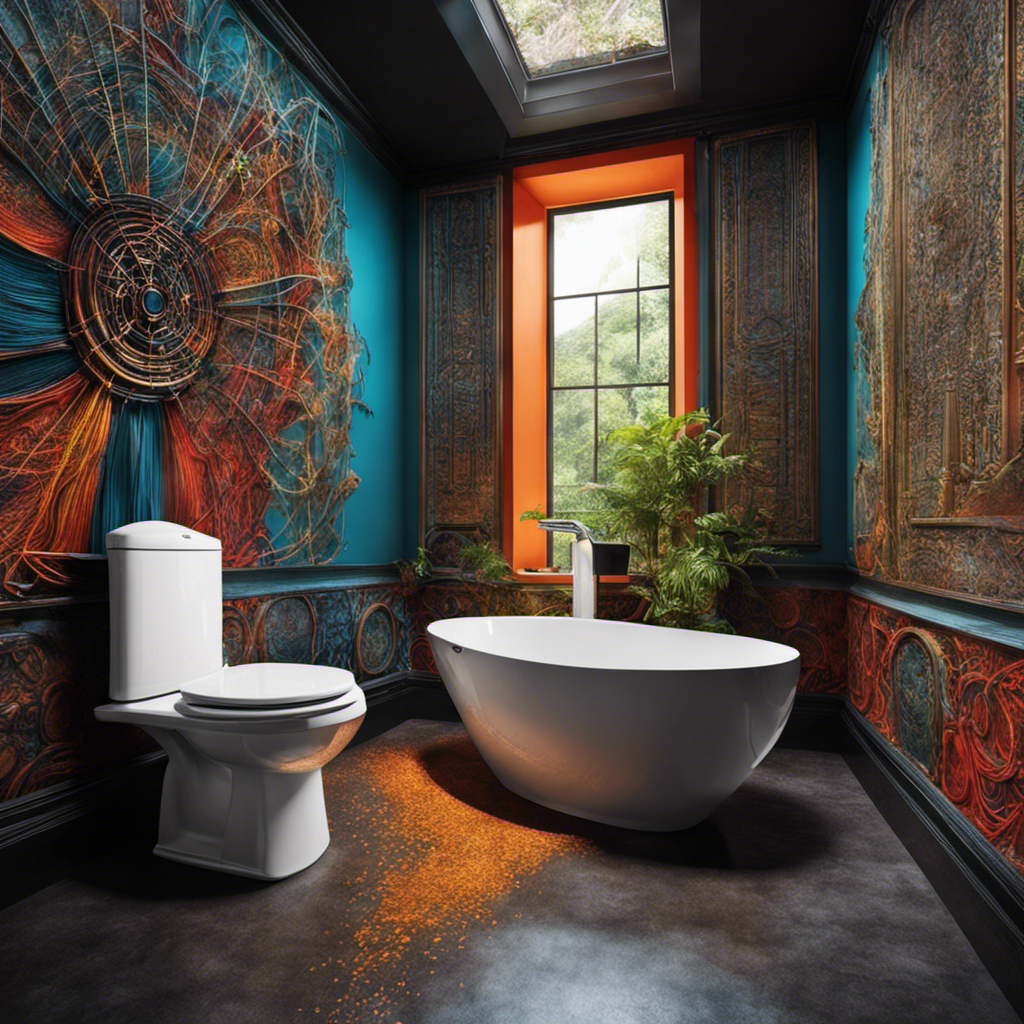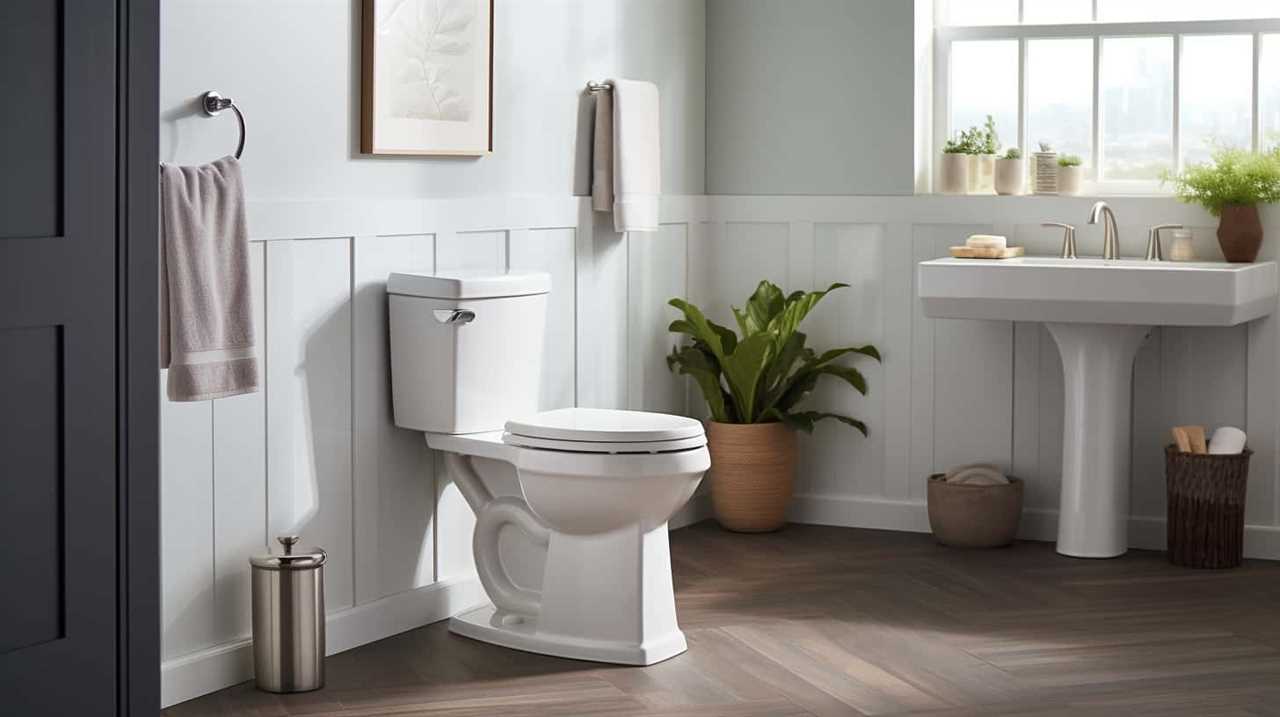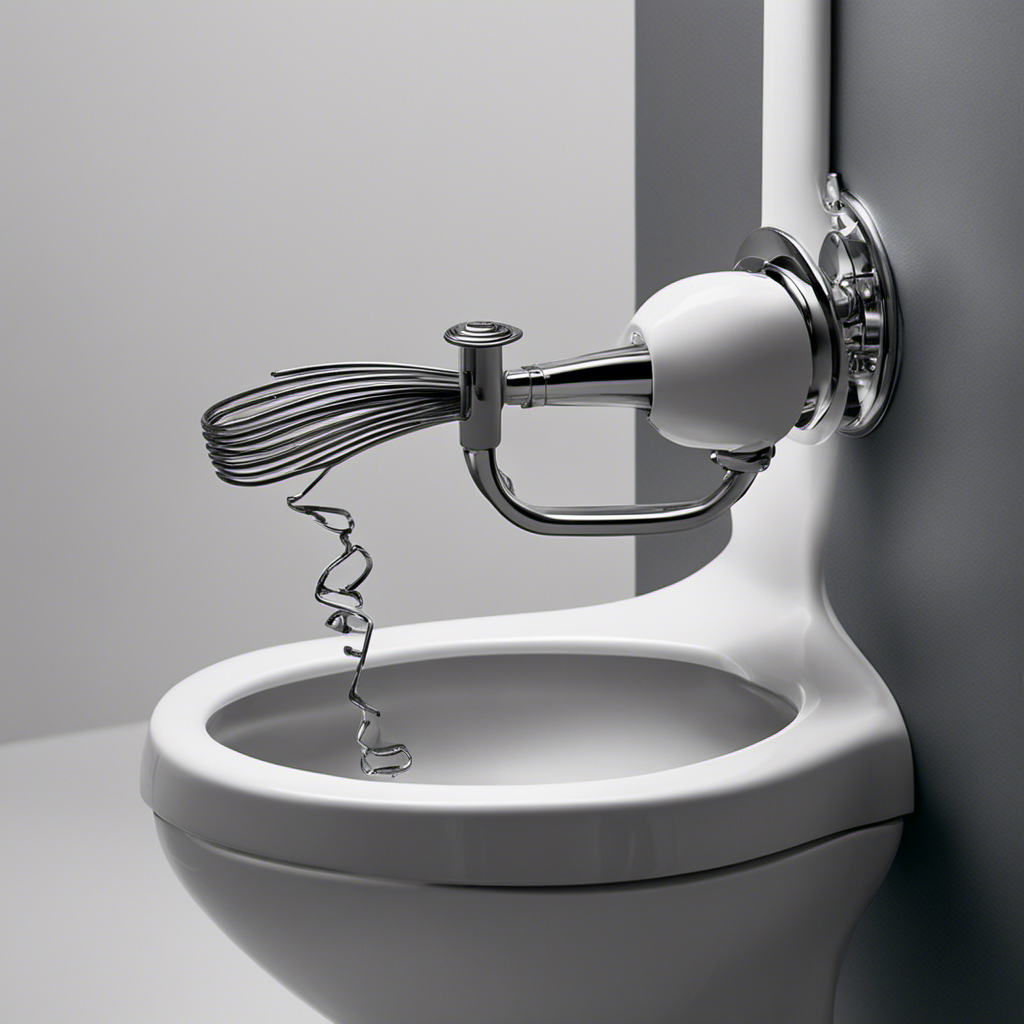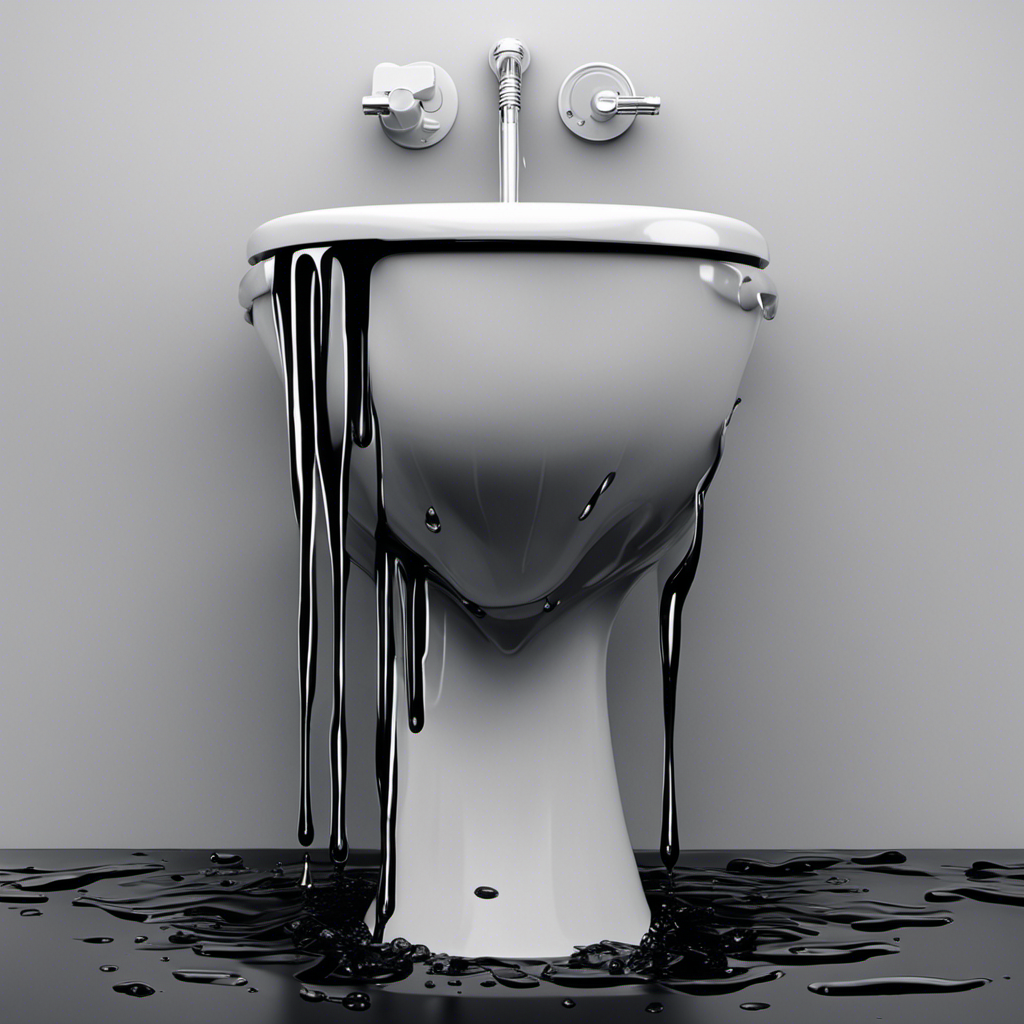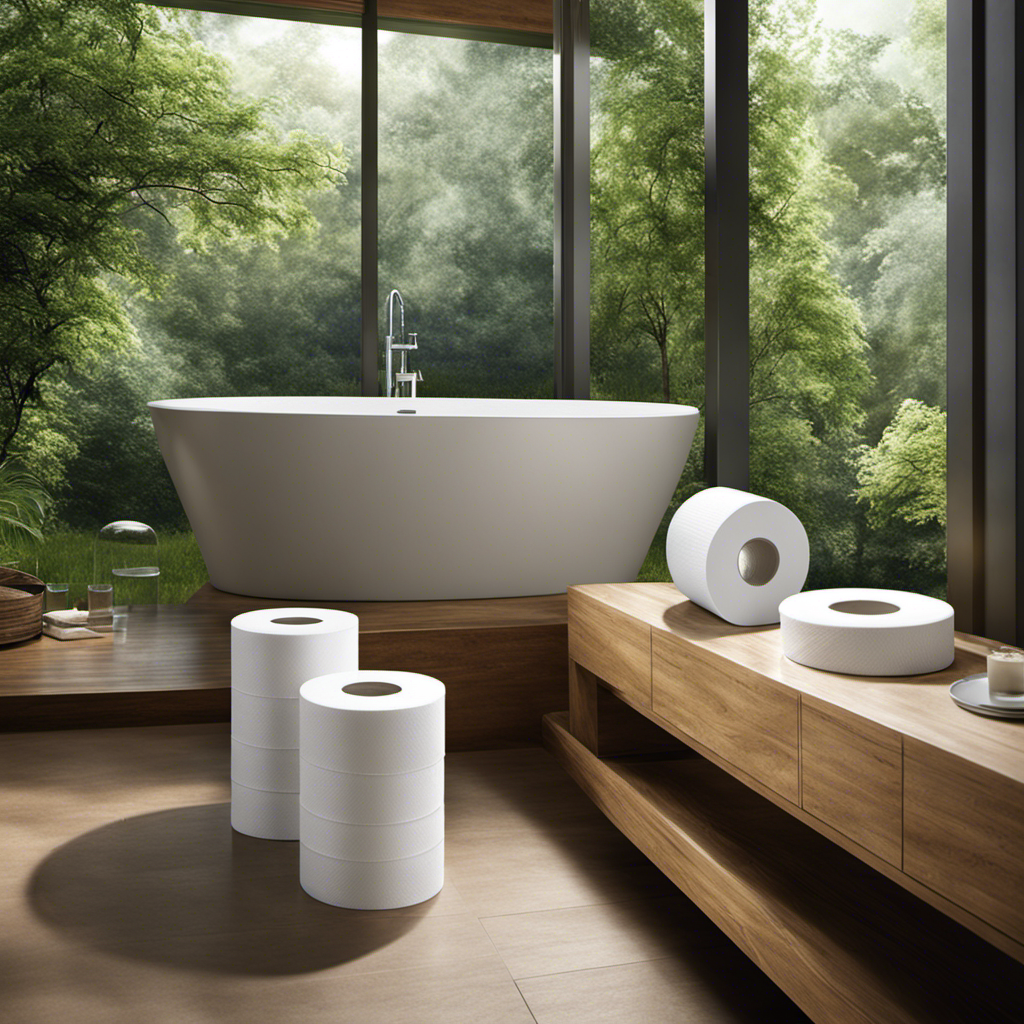Ever experienced that unsettling noise coming from your pipes when you flush the toilet? It’s like a symphony of clanging and rattling that can leave you puzzled and annoyed.
In this article, I’ll delve into the possible causes of these noisy pipes and explain the phenomenon known as water hammer.
But fear not, for I’ll also provide you with practical solutions and tips for proper toilet maintenance.
So sit back, relax, and let’s dive into the world of noisy pipes after flushing.
Key Takeaways
- Noisy pipes when a toilet flushes can be caused by various factors such as malfunctioning valves, water pressure issues, loose pipe connections, rapid water flow, and vibrating pipes.
- Water hammer, which is the sudden stoppage of water flow, can cause pipe damage, excessive noise, and vibrations. Prevention methods include installing air chambers or water hammer arrestors and properly closing valves and faucets.
- DIY pipe insulation, such as foam pipe insulation, can help reduce noise from pipes after flushing. Insulation should be measured and cut to fit pipes and wrapped snugly around them to dampen sound vibrations and reduce noise transmission.
- Proper toilet maintenance, including regular cleaning, inspecting for leaks, and replacing worn-out parts, is important to ensure proper flushing, prevent clogs, and address issues promptly. If loud sounds persist or there are DIY mistakes, improper pipe sizing or materials, or poorly secured pipes, it may be necessary to call a professional plumber to address the issues and prevent further damage.
Possible Causes of Noisy Pipes
One possible cause of noisy pipes when the toilet flushes is a malfunctioning valve. Water pressure issues can contribute to this problem.
When the toilet is flushed, the water flows rapidly through the pipes, creating pressure. If the valve is not functioning properly, the sudden increase in water pressure can cause the pipes to vibrate and make noise.
Another possible cause of noisy pipes is loose pipe connections. Over time, the connections between the pipes can become loose and create gaps. When water flows through these gaps, it can cause the pipes to rattle and produce noise.
To address these issues, it is important to check the valve and tighten any loose pipe connections. This will help maintain proper water flow and reduce the occurrence of noisy pipes when the toilet is flushed.
Understanding Water Hammer and Its Effects
To better understand water hammer and its effects, you should know that it occurs when the flow of water is suddenly stopped or redirected in your plumbing system. This phenomenon can be quite dangerous and can lead to various issues in your home’s pipes.
Here are three key points to consider:
-
Dangers of water hammer in plumbing systems: Water hammer can cause pipes to burst or become damaged, leading to costly repairs. It can also create excessive noise and vibrations, which can be disruptive and irritating.
-
How to prevent water hammer in your home’s pipes: One effective way to prevent water hammer is to install air chambers or water hammer arrestors in your plumbing system. These devices help absorb the shock of sudden water flow changes and prevent the occurrence of water hammer. Additionally, ensuring that your valves and faucets are properly closed can also help prevent water hammer.
Solutions for Noisy Pipes After Flushing
If you’re experiencing excessive sounds in your plumbing system after flushing, there are several possible solutions to consider.
One effective solution for toilet flush noise reduction is DIY pipe insulation. Insulating the pipes can help minimize the noise caused by water flow and vibrations.
To start, you’ll need foam pipe insulation, which is available at most hardware stores. Measure the length of the pipes you want to insulate and cut the insulation accordingly.
Then, simply wrap the foam insulation around the pipes, making sure it fits snugly. This will help dampen the sound vibrations and reduce the noise transmitted through the pipes.
DIY pipe insulation is a cost-effective solution that can significantly reduce the noise levels in your plumbing system.
Importance of Proper Toilet Maintenance
When it comes to maintaining your toilet, regular cleaning and inspecting the parts for wear and tear are essential. Here are three important toilet maintenance tips to prevent plumbing issues:
-
Clean the bowl and tank regularly: Regularly cleaning the bowl and tank helps prevent the buildup of mineral deposits and bacteria, ensuring proper flushing and preventing clogs.
-
Check for leaks: Inspect the toilet for any leaks by adding a few drops of food coloring to the tank. If the color appears in the bowl without flushing, there may be a leak that needs to be addressed promptly.
-
Replace worn-out parts: Over time, parts like the flapper or fill valve can wear out and cause issues with flushing or water flow. Regularly inspect these parts and replace them if necessary.
When to Call a Professional Plumber for Noisy Pipes
Calling a professional plumber is necessary if you hear loud sounds coming from the plumbing system. These noises could be a sign of a DIY plumbing job gone wrong or common mistakes in DIY pipe installations.
One common mistake is improper pipe sizing, which can lead to increased water pressure and noisy pipes. Another mistake is using the wrong type of pipe materials, such as using PVC pipes instead of copper for hot water lines. This can cause the pipes to expand and contract, creating loud sounds when water flows through them.
Additionally, poorly secured pipes can vibrate and make noise when water is running. It’s important to address these issues promptly to prevent further damage and ensure the proper functioning of your plumbing system.
Conclusion
In conclusion, it’s essential to address noisy pipes after flushing to maintain a quiet and functioning plumbing system.
By understanding the possible causes, such as water hammer, and implementing solutions like installing water hammer arrestors or adjusting water pressure, homeowners can ensure a peaceful bathroom experience.
Regular toilet maintenance is also crucial in preventing further issues.
Remember, prompt action and proper care can save you from potential plumbing disasters. So, don’t hesitate to call a professional plumber if the noise persists.
Stay serene and let your pipes sing a silent tune.
